#Anomie
Explore tagged Tumblr posts
Text
the anomie of our times
Anomie is a term in sociology. Its literal definition is "normlessness."
Anomie is what we are living through. This first 100 days especially. Anomie results when people are overwhelmed.
In sociology class, my professor explained it thus: we wake up in the morning, we take a shower, we brush our teeth, we pick out our outfit for the day, then we sit down and eat food that has been designated as "breakfast food" by whatever culture we live in. We have our routines to help stave off anomie. Because as human beings we have free will and we can choose to wake up, walk out naked, poop on our neighbors yards. It's a bad idea, which is why have norms, to discourage people from doing terrible things and also to help us narrow down our choices.
Because one of the results of anomie is literally mental illness. If you can't make sense of things, if you don't know what you can or are allowed to do, if you become so overwhelmed you become numb and depressed and anxious, all the time. It's while one of the founding fathers of sociology, Emile Durkheim, who studied suicide extensively, listed anomic suicide as one of the four kinds of suicide, or reasons people end their own lives.
Turecki and Brent define anomic suicide thus: "Anomic suicide is a type of suicide that occurs when there is a breakdown of social norms and values, leading to a sense of purposelessness and a lack of direction in individuals' lives."
What our government is doing to us now is pushing us into a state of anomie. If you are feeling your mental illness getting worse because of the news, it's by design.
They are overwhelming us with horror constantly to provoke a feeling of helplessness in the hopes that their opponents will simply give up. A sort of political version of anomic suicide. Or in the case of some people, very real anomic suicide has happened and will happened because of our current politics and the state of our society.
You have to battle the anomie any way you can. Don't let them think you're powerless. You're not. If you have a phone and a computer you can do something by flooding government officials with your complaints. Turn the anomie right back on them.
#fuck donald trump#national nightmare#anomie#sociology#corrected my typo lol plz don't @ me about breakfast foot i am on many medications
58 notes
·
View notes
Photo
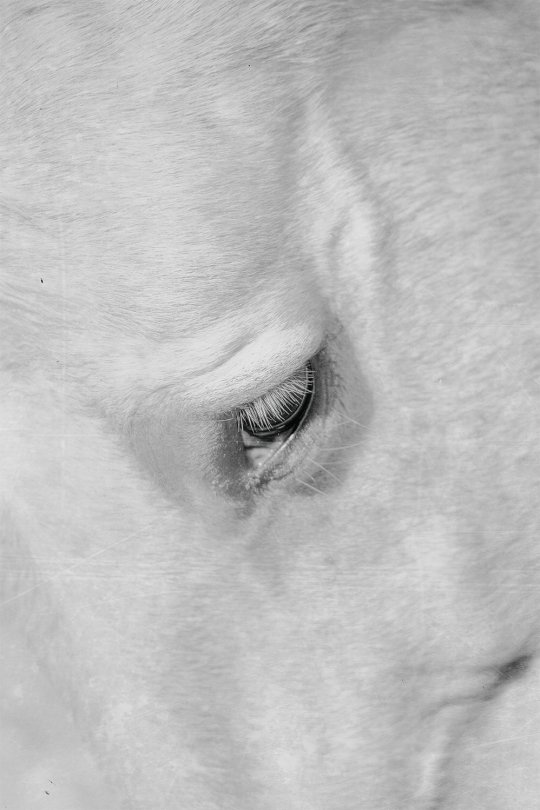
Quintin O'Connell - ANOMIE — BROAD
592 notes
·
View notes
Text

🩶
#aeonian#hogfather#terry pratchett#leafs#numinous#wonders#ineffable#poetry#ataraxia#words#universe#querencia#mal du siècle#nocturne#desiderium#art#aesthetic#grunge#alternative#80s#pale#spleen#lachesis#lypophrenia#anomie#anonymous
56 notes
·
View notes
Photo

Quintin H. O'Connell. From the «Anomie» series
Follow my new AI-related project «Collective memories»
35 notes
·
View notes
Text

19 notes
·
View notes
Text
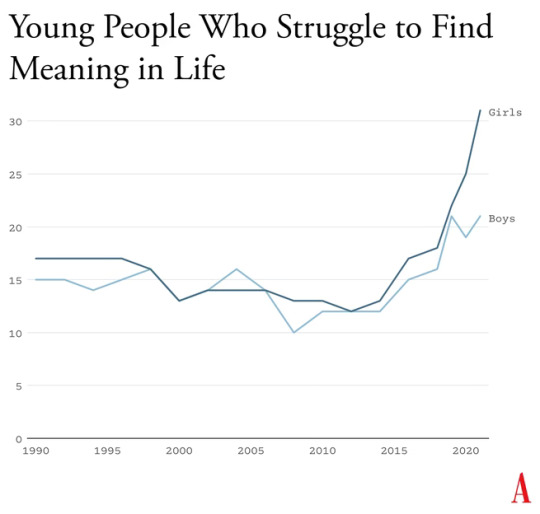
End The Phone-Based Childhood Now
A long-running survey of American teens found that, from 1990 to 2010, high-school seniors became slightly less likely to agree with statements such as “Life often feels meaningless.” But as soon as they adopted a phone-based life and many began to live in the whirlpool of social media, where no stability can be found, every measure of despair increased. From 2010 to 2019, the number who agreed that their lives felt “meaningless” increased by about 70 percent, to more than one in five.
8 notes
·
View notes
Text
The end or sudden lack of stress also creates stress? Our brains are awesome.
2 notes
·
View notes
Photo
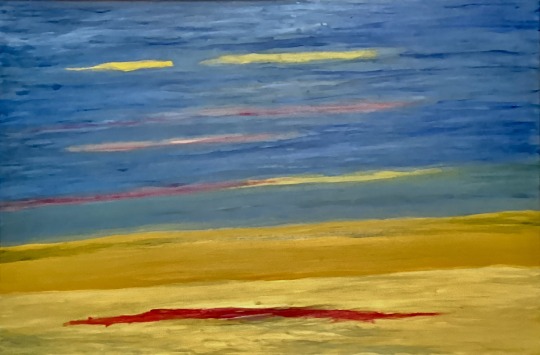
TORPOR, oil on canvas, 30 by 40 by 2. $ 1200. www.davidburchpaintings.com
#art#contemporary art#art on tumblr#primary colours#abstract landscape#linear#contrast#colour depth#anomie
29 notes
·
View notes
Text

Entfremdung אימערטים
(Alienation Everywhere)
#illustration#artwork#original#art#collage#colour#yiddish#black and white#alienation#marx#marxism#entfremdung#atomisation#anomie#psychopolitics#modernism#capitalism#1844#economic and philosophic manuscripts#mind fuck
5 notes
·
View notes
Text
SCoR - Section II, Ch. 1, Part B "Origins of Institutionalization"
summary of “The Social Construction of Reality” by Berger and Luckmann, gotta repost because Tumblr fucked up the article slugs and I couldn’t link to individual posts correctly
I. Repeated actions become habitual/patterned, thus reproducible with less effort; NB this isn't a specifically social phenomenon.
II. Habitualization provides psychological relief of choice limitation, and also frees energy for times when innovation/deliberation is required to respond to a situation.
III. Habitualization also means we don't need to define each response on the fly; prediction becomes possible, even precise.
IV. Habitualization precedes institutionalization, and can take place in isolation, but in practice it takes place in the context of an institution or institutions.
V. institutions are formed when there is a reciprocal/multilateral typification of particular types of actions by particular types of actors ("the president shall address the congress")
VI. Inherent in the institution are: historicity and control. Historicity, because institutional patterns aren't formed instantly ("institutions always have a history, of which they are products"); control, because institutional patterns are typified, therefore limited, even regardless of actual enforcement behaviors or patterns as such that are part of the institutional structure.
VII. Institutionalization is incipient in every social interaction continuing in time.
VIII. That is, even two individuals thrown together without a shared social context WILL start to typify each other's behaviors - the initiation of roles, patterns of action, historicity, etc.
IX. The participants in this process benefit from it in that they end up with more ability to predict the other's actions - less astonishment/fear, more familiarity.
X. Any repetition tends to some degree of habitualization; any observation tends to some degree of typification; but in an ongoing bilateral social situation, certain actions are more likely to be habituated/typified. Which ones?
XI. Generally, that which is relevant to both parties (hereafter, A and B). This obviously varies based on material conditions, however, usually communications come first, followed by labor/sexual/territorial relationships, etc. all of which will be inflected by the prior socialization of A and B.
XII. Then, if A and B have a child ("C"), C will experience the parental patterns as objective historical givens, NOT contingent constructs.
XIII. In other words, prior to C, A and B construct a world that is entirely transparent and accessible to them, fluid and mutable. After C, and to C, this world is objective and opaque - and this also affects A and B since they now need to keep things more consistent for C's sake.
XIV. This is the birth of the social world we are familiar with, i.e. an objective fact received from without - the child takes it all for granted, the signifier IS the signified, etc.
XV. This extends to the world of institutions that we live within - objective, external, incomprehensible except via experience.
XVI. Nevertheless, this is still a human-constructed reality - "Society is a human product. Society is an objective reality. Man is a social product." - in an ongoing dialectical interaction.
XVII. Institutional reality also requires legitimation - ways in which it can be explained and justified to those who do not have a direct memory of its creation. These legitimations are learned as part of socialization into a given institutional order.
XVIII. As institutions depart form the original social processes that formed them, there is a corresponding increase in the need for more explicit mechanisms of social control - folks must be "taught to behave" then "kept in line."
XIX. In practice, mutual interactions between people or groups lead to multiple tracks of institutionalization which don't necessarily share a functional or logical integration.
XX. Nevertheless, institutions (which persist) do tend to some level of functional/logical coherence, implying some level of common relevance/shared meaning among participants. Note that role performances can (and must?) be functionally segregated, but MEANINGS tend to a consistency of some sort as people try to understand their experiences as occurring within some kind of framework. There may be a physiological cause for this drive*, but it isn't necessary to assume one to appreciate this habit as a real empirical phenomenon.
XXI. "It follows that great care is required in any statement… about the 'logic' of institutions." The 'logic' is not 'within' the institution, but rather is imposed by our reflections about that institution.
XXII. Language provides the fundamental well of logic which can be drown on to explain the institutional world, and all legitimations are expressed in language. This also connects with the social "knowledge" that the world one inhabits is a consistent and logical whole, since from that fact comes efforts to explain experience in terms of the pre-existing internalized social knowledge.
XXIII. So, institutions are integrated, but this is "not a functional imperative of the social processes that produce them;" rather, it is a byproduct of individual need to see their actions as part of a subjectively meaningful whole.
XXIV. Given this, it follows that analyzing social phenomena/institutional order would primarily depend on analyzing the understanding of the social knowledge of the people composing these institutions, of which complex theoretical legitimations are a part but by no means the whole. In fact, "the primary knowledge about the institutional order is knowledge on the pre-theoretical level," the sum total of "what everybody knows" about that order.
XXV. Since this knowledge is socially objectivated AS knowledge, deviations from it ("depravity", "insanity", "ignorance") occupy an inferior cognitive status; because this social knowledge is coextensive with "what is knowable," deviations are seen as deviations from reality itself. "Knowledge in this sense is at the heart of the fundamental dialectic of society… [it is] a 'realization' in the double sense… of apprehending the objectivated social reality, AND in the sense of … producing this reality."
XXVI. For example, in the course of division of labor, an area-specific body of knowledge is developed, crystallized in language, and transmitted to particular actors; the knowledge thus transmitted becomes an objectivation that serves to structure and channel further actions of its type.
XXVII. Then, this body of knowledge is available to the next generation as an objective truth which has the power to shape an individual into an instance of that actor, which definition only has meaning inside the social world that hosts this knowledge. With variation, this same process applies in ANY area of institutionalized conduct.
----
Notes:
re. V - The word "institutionalization" was used in the book where is used "formed"; "institutionalization" is overloaded to also mean "molding a human as an institutional actor" IMO (ref Brooksy from Shawshank Redemption)
re. XII - Unlearning the "objectivity" of parental dictates is probably a universal developmental phase? Or not - but maybe recognizing it is?
re. XVII - I can imagine an institution so totalizing that no legitimation is required - "force of nature" - conflict/discrepancies generate questions that must be answered, but if no discrepancies, no questions? Also implies that such institutions may already exist but we wouldn't know - because we don't question them or they are so universally taken for granted (i.e. the concept of death itself, see The Fable of the Dragon-Tyrant)
re. XX -
* I added the caveat about persistence - might be gratuitous, but seems relevant given my interest in institutional life cycles i.e. they CAN die or degrade or change, so how? Dis-integration of belief seems related, but is it symptom or cause? Or both?
** I think Energy Minimization IS this physiological (or even pre-physiological/physical) cause(? need? drive?)
re. XXI - Found this paragraph extremely surprising statement at first, but then less so - interpreted as another instance of "The institution is in our minds" - but might be wrong about this!
re. XXIII - So what happens if folks no longer feel the need or have the ability to do this integration of experience into a "meaningful whole?"
If institutional strength is in the minds of its members, then institutional weakness would result from folks not feeling a need to integrate their experiences into the institutional patterns
"all is vanity" - "integration is pointless" (cynicism?) as a concept is a degenerate simplicity, saving much effort - folks don't have to think hard about things or meaningfully engage with the world they inhabit, because all effort is proactively deemed a waste of time
and in a complex technical society such as ours, which is relatively productive and protective of its members, a given individual member doesn't NEED to engage with many of its structures in order to survive (vs. eg the medieval peasant of my imagining)
leads to a dislocation/disconnection/differentiation between 'social integrators' eg. folks who commit to institutional logics and embody them, pulling together and strengthening them, vs. 'social neutrinos' - folks existing without integrating or participating much ("consumers", maybe!)
hypothesis: industrial productivity gains not put into "shorter workdays" (i.e. fewer hours assigned to materially-productive labor) but rather in giving less of a shit about the world we find ourselves in; anomie/ennui
drivers(?)
existentialism/scientific revolutions driving human "place in universe" farther and farther out of center (Thomas Kuhn, Eric Hobsbawm)
nb existential philosophy seems to develop roughly parallel to industrial revolution, initially dislocated (kierkegaard?) provide language for those who follow
american "rugged individualism"
contra "network", individual DOES matter, but lives in a matrix (hah) of institutions that he believes he cannot influence - which makes it so
institutional immune systems - change-from-within resistance (Le Chatelier's Principle again?)
institutions also try to change their environment to be more hospitable (Legibility)
re. XXV - See also XVI for the cycle being described in more words here
#the social construction of reality#sociology#institutionalization#the shawshank redemption#energy minimization#cynicism#ennui#anomie#thomas kuhn#eric hobsbawm#existentialism#scientific revolution#rugged individualism#soren kierkegaard#network#le chatelier's principle#james scott#legibility#the fable of the dragon-tyrant
2 notes
·
View notes
Text

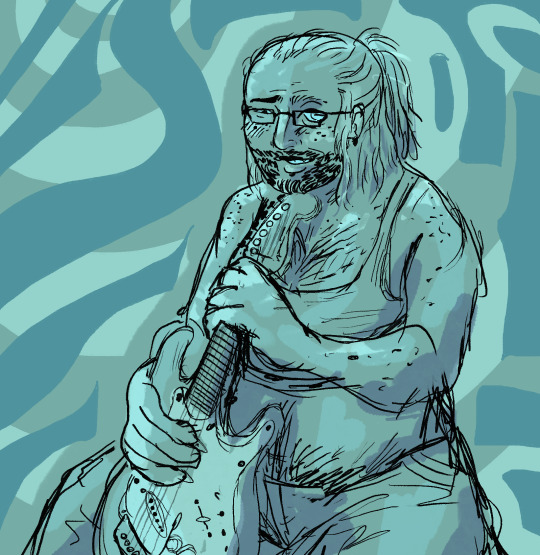
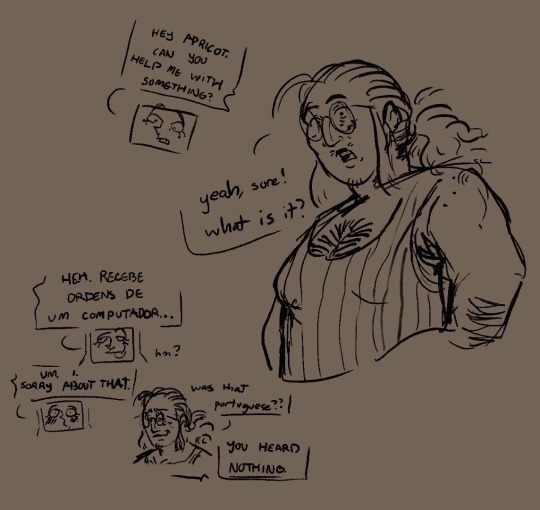
art of some of my objectum ocs! because why not
🤖 q [they/it] and cimon
🐸🎸 marco [he/they] and cassandra [it/she]
💾 apricot [they/any] and ber²y [he/it/any]
#art#digital art#objectum#robot objectum#instrument objectum#computer objectum#objectum art#note: tried to add image descriptions under a cut on this post but tumblr keeps replacing them ??#very strange. i hope judt having it in the images is ok#oc#original character#ANOMIE
22 notes
·
View notes
Video
youtube
Christopher Lasch - The Culture of Narcissism
#books#anomic society#anomie#cultural decline#degeneration#literature#christopher lasch#culture of narcissism#culture
5 notes
·
View notes
Text
The Ink Black Heart by Robert Galbraith

Title: The Ink Black Heart Author: Robert Galbraith Series: Cormoran Strike #6 Number of Pages: 1012 Genre: Murder & Suspense Thrillers Publisher: Mulholland Books Date of Original Publication: August 30, 2022 ISBN: 978-0316413039
This book literally took me all of May to read. 1012 pages down and now a wait until the next book comes out in September. The Ink Black Heart was my favorite book so far of the Cormoran Strike series.
Robin and Cormoran are partners of a private investigative firm, and they are back at it with another strange murder case from Galbraith. This one is about a couple who create a web cartoon series that gets turned into a game. Unfortunately for one of them, their life is ended and people within the game are being killed as well. The creator of the game admits to the first murder, but no one knows who he is. Strike and Robin are not cyber investigators, but they do their best and solve who the creator of the game and serial killer is.
I liked the characters in this book and the development of the recurring characters. The storyline was interesting and unique, and I did not find there to be any slow parts. Each new character had their own flaws and characteristics. There were multiple locations and events that occur that keep the reader guessing who the murderer is. I did not find it to be an easy solution. I look forward to book 7 of the series coming out in September.
The previous 5 books were frustrating because it’s obvious that Robin and Cormoran might start a relationship. However, it was noted that the progression between the two is slow. Now book 6 was a little ‘in your face’ with their relationship issues and them constantly trying to figure out if they like each other more than business partners. It was a little annoying. And in the end, there’s no resolve. Besides that, the only other negative thing I found about the book was that Galbraith killed my favorite character off. I would still recommend it to read.
★★★★★ Definitely recommend, but I recommend reading the series in order. Read the first 5 first.
~
Up Next: Hard to Breathe (Drake Cody #2) – Tom Combs
Yearly Goal Marker:
Book Goal: 12/75 – 16% Page Goal: 4.6/10k – 47%
Follow me on LibraryThing, Goodreads, and Amazon. Same handle: OMBWarrior47
#Robert Galbraith#Cormoran Strike#Robin Ellacott#The Ink Black Heart#Anomie#Morehouse#Murder Thriller#Book Review
3 notes
·
View notes
Text
Capitalism, Durkheim wrote, is antithetical to creating and sustaining the relationships that are vital to social bonds. Capitalism rewards those for whom relationships are transactional and temporary. Relationships under capitalism are mercenary. They are part of the scheme for personal self-advancement and require the oily manipulation of others. To advance in a capitalist system it is necessary to build and then discard a series of ultimately hollow relationships. These empty relationships—and you can see them on display at any business gathering—contribute to the collective anomie and disintegration of social bonds.
Capitalism may cater to a natural desire among many for self-enrichment, but you don’t want this belief system to dominate society. Capitalism rewards single-minded narcissists and often con artists devoid of empathy and incapable of remorse. It rewards those focused exclusively on personal gain and self-aggrandizement. These dedicated capitalists often lack the capacity to form meaningful bonds, seeing in other people tools for commodification and exploitation. Once a capitalist class achieves complete control, as it has in the United States, it dismantles the structures that make social bonds possible, seeing in them an impediment to profit.
5 notes
·
View notes
Photo
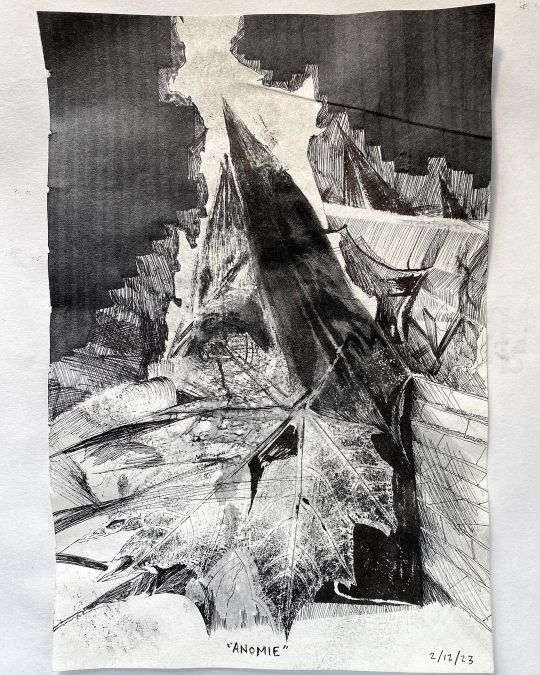
“Anomie” 2/12/23 - #anomie #drawing #sketchbook #drawingoftheday #photooftheday #sketchoftheday #artistofinstagram #collage #coloredpencil #ink #inkdrawing #art #artwork #artschool #artistlife #journal #honesty #radicallyhonest #watercolor #markers #alcoholmarkers https://www.instagram.com/p/ColEaCTLt6i/?igshid=NGJjMDIxMWI=
#anomie#drawing#sketchbook#drawingoftheday#photooftheday#sketchoftheday#artistofinstagram#collage#coloredpencil#ink#inkdrawing#art#artwork#artschool#artistlife#journal#honesty#radicallyhonest#watercolor#markers#alcoholmarkers
2 notes
·
View notes
Text



1 note
·
View note